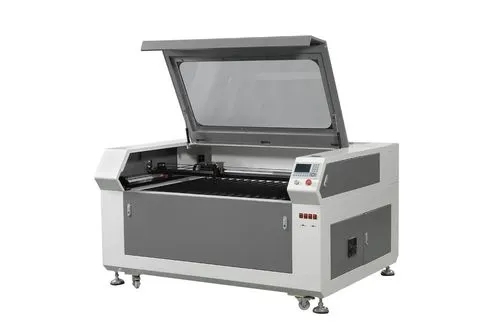Introduction
Laser cutters have been around for several decades and have emerged as a highly versatile tool in various industries. These machines use a high-powered laser beam to precisely cut or engrave different materials, including wood, metal, plastic, glass, and fabric. As a result, laser cutters have the potential to revolutionize material processing by offering unprecedented levels of precision, speed, and versatility. In this article, we will explore the capabilities of laser cutters and examine how they are reshaping the manufacturing landscape.
The Advantages of Laser Cutters
Laser cutters offer a multitude of advantages over traditional material processing methods. Here are some key benefits:
- Precision: Laser cutters provide incredible accuracy that is unmatched by other techniques. The laser beam follows a computer-guided path, resulting in precise cuts and engravings with tolerances as low as 0.1 millimeters. This level of accuracy allows for intricate designs and reduces material waste.
- Speed: Laser cutting is incredibly fast, especially when compared to manual cutting methods. The laser beam can rapidly move across the material, making thousands of cuts per minute. This high-speed operation enables manufacturers to significantly increase their productivity.
- Versatility: Laser cutters can be used on a broad range of materials, making them extremely versatile. Whether it’s thin sheets of metal or delicate fabrics, laser cutters can handle them all with ease. This flexibility makes laser cutting an attractive option for various industries, including automotive, aerospace, fashion, and even arts and crafts.
- Minimal Material Contact: During laser cutting, the material only comes into contact with the focused laser beam. This eliminates the need for physical contact or clamping, reducing the chances of damage or contamination. As a result, laser cutting is ideal for materials that may be sensitive to excessive heat or pressure.
- Complex Geometries: Laser cutters excel at creating intricate shapes and complex geometries. The laser beam can easily navigate tight corners and sharp angles, ensuring the precise reproduction of even the most intricate designs. This capability opens up new avenues for creativity and design innovation.
The Impact on Material Processing
The introduction of laser cutters has had a profound impact on the field of material processing. Here are three key areas where laser cutters have revolutionized the industry:
1. Industrial Manufacturing
With their high precision, speed, and versatility, laser cutters have become invaluable tools in industrial manufacturing. They enable manufacturers to efficiently produce intricate components, improve overall product quality, and reduce manufacturing costs. From automotive parts to electronic components, laser cutters have played a pivotal role in streamlining production processes.
Case Study: Automotive Industry
In the automotive industry, laser cutters are extensively used to manufacture body panels, exhaust systems, and interior components. The precision offered by laser cutters ensures a perfect fit for every part, resulting in improved assembly and reduced production time. Additionally, laser cutting allows for the creation of lightweight components, contributing to better fuel efficiency and reduced emissions.
2. Art and Design
Laser cutters have also made a significant impact in the world of art and design. Artists and designers now have the ability to create intricate patterns, detailed engravings, and complex sculptures with ease. Traditional methods would often require extensive manual labor, limiting the possibilities of expression. However, laser cutters provide an efficient and precise way to bring complex ideas to life.
Case Study: Architectural Decor
Architects and interior designers are embracing laser cutters to produce unique decorative elements for buildings and spaces. Intricate patterns can be cut into metal or wood panels, creating stunning visual effects and adding a touch of sophistication to architectural designs. The versatility of laser cutting also allows for the inclusion of intricate details that were once difficult to achieve.
3. Rapid Prototyping
Laser cutters have significantly sped up the prototyping process in various industries. Designers and engineers can quickly produce functional prototypes, providing an opportunity to evaluate the product before mass production. The precision and speed of laser cutting allow for rapid iteration and design optimization, ultimately reducing time to market for new products.
Case Study: Electronics
Laser cutters have become invaluable tools in the electronics industry for rapid prototyping of printed circuit boards (PCBs). By precisely cutting through copper layers, intricate circuit patterns can be created with ease. This enables engineers to test and refine their designs at a much faster pace than traditional PCB prototyping methods.
FAQs
Q: Are laser cutters safe to use?
A: When operated properly, laser cutters are safe to use. However, it is essential to follow safety guidelines and wear appropriate protective equipment, such as safety glasses, to avoid any potential harm from the laser beam.
Q: Can laser cutters work with all types of materials?
A: Laser cutters are highly versatile and can work with a wide variety of materials, including wood, metal, plastic, glass, fabric, and more. However, it is crucial to ensure that the material being processed is compatible with laser cutting and does not release harmful fumes when subjected to the laser beam.
Q: Is laser cutting an environmentally friendly process?
A: Laser cutting is generally considered to be an environmentally friendly process. The precision of laser cutters reduces material waste, and the lack of physical contact minimizes the risk of damaging or contaminating the material. Additionally, laser cutting produces minimal fumes compared to other traditional cutting methods, resulting in a cleaner working environment.
In conclusion, laser cutters have undoubtedly revolutionized material processing. Their precision, speed, versatility, and ability to handle complex geometries make them indispensable tools in various industries, from industrial manufacturing to art and design. As technology continues to advance, laser cutters are likely to play an even more significant role in shaping the future of material processing.





